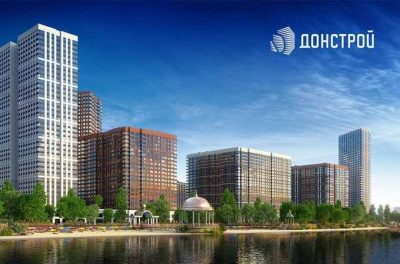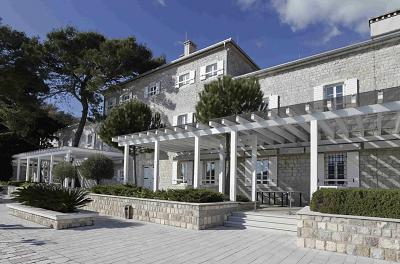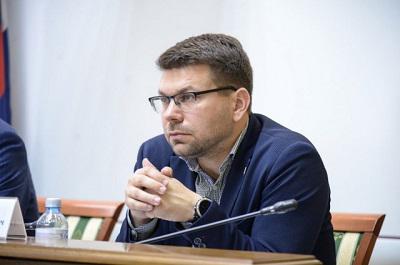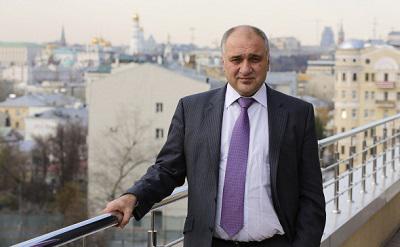The names of Roskosmos' leader Dmitry Rogozin, Rosneft's head Igor Sechin, the Rotenberg brothers, VTB Bank's president Andrey Kostin, Sberbank's chairman German Gref, and the same bank's supervisory board chairman Igor Siluanov are well-known to everyone.
Everyone understands that this is the top group of leaders of Russia involved in governing the country and making crucial decisions. They are the elite, so to speak.
But there's another common factor connecting all these individuals, and it's simply called “Donstroy”. This is a real estate development and construction company primarily based in Moscow. All these people are in some way involved in this capital city's development company. Some are directly involved, like Kostin or Gref, while others are indirectly linked, such as Rogozin or Sechin. But at some point, these names (and many others) emerged in connection with the history of Donstroy.
To grasp what will be discussed further, a brief historical background on the Donstroy company is needed. As mentioned earlier, it's a developer of the capital city. It was established in 1994 by partners Maxim Blazhko and Dmitry Zelenov. They owned it at least until 2009-2010 when there was a change in management following debt restructuring.
The owners changed, but the only known information about who ultimately benefited from the company (or more precisely, the Donstroy holding, which acquired numerous subsidiaries and affiliated companies over time) is not disclosed. Five legal entities are mentioned, but their founders and owners are carefully concealed, and this information is closely guarded by Donstroy. Even the names of these legal entities are hidden, which is rather odd.
So, in 2009, Don-Stroy (as the company was called then, with a hyphen in the middle) amassed a significant amount of debt, particularly with state-owned VTB and Sberbank. The first owed about 500 million dollars, while the second owed 20 billion rubles (at the rate of that time). As part of the debt restructuring, several companies were removed from Don-Stroy. Notably, the debt to VTB was cleared by selling a subsidiary of Don-Stroy – CJSC Don-Stroy Invest – to the bank for 500 rubles, yes, exactly five hundred rubles.
The debt to Sberbank was repaid by transferring another subsidiary of Don-Stroy – DS Development LLC, along with the Moscow business center Nordstar Tower built by Don-Stroy, also for “a symbolic few hundred rubles.
After resolving the debts, Don-Stroy began operating under the name Donstroy without a hyphen in its title. The management (as well as the owners) changed, with Alena Deryabina becoming the general director of the company since 2010. Before that, she held various key positions at VTB Bank and was part of the inner circle of its head, Andrei Kostin. Deryabina was an advisor to the vice president, head of the non-financial assets department, and vice president at VTB. It's not hard to figure out who is one of the current beneficiaries of the Donstroy holding, even without documentary evidence.
It's not certain which top managers from Sberbank went to work at Donstroy. It's not hard to believe that Sberbank head Gref and his assistant Siluanov wrote off 20 billion rubles to Don-Story out of pure philanthropy. So, strong assumptions can be made here.
We should note that the state owns 92% of VTB Bank, and the National Wealth Fund of Russia owns 50% + 1 share of Sberbank. Interesting questions arise here too. But let's not speculate and leave it to those who have more accurate information.
Let's remember some of the financial results of Donstroy holding. In 2020, JSC IC Donstroy made a profit of 117,000 rubles with a revenue of 15.2 billion rubles. Another holding company, Don-Stroy Invest JSC, had a revenue of 22.3 billion rubles in 2020 but suffered losses of 6.2 billion rubles.
It's important to note that all this is managed by former VTB employee Alena Deryabina. This also makes me think, especially considering that these structures have a permanent credit line at VTB Bank. This is despite the fact that the claims against Donstor's structures amount to at least 160 million rubles, and more in the courts are unknown.
This is the situation involving banks, Kostin, Siluanov, and Gref.
Let's talk about the Rotenberg brothers. During the ownership structure disturbances of Don-Stroy and the transfer of its assets to Sberbank and VTB, the name of Roman Gromozdov came up. Gromozdov has considerable influence on the decisions made by the general director of Donstroy, Alena Deryabina, and is associated with the Rotenberg entourage. The Rotenbergs also assist Donstroy in getting orders from VEB, Rosneft, and Roskosmos.
As for Igor Sechin, Rosneft is linked to Donstroy through the KL Development company. Currently, its official owner is Special Construction Company Otdelfinstroy and Partners LLC, owned by two legal entities – LLC SZ Otdelfinstroy and JSC SZ KSK Group. The holder of the register of shareholders of JSC SZ KSK Group is the company Reestr-RN, which is part of the structure of Rosneft.
If things are complicated with the head of Rosneft, Igor Sechin, with companies that own each other, it's simpler with the head of Roscosmos, Dmitry Rogozin. Evidence of his involvement in the activities of Donstroy can be seen in the story of the land plot in Moscow, on the street Sergey Makeev, 7, where the former registration of the Federal State Unitary Enterprise Design Bureau Motor was located. It was previously part of Roskosmos and was controlled by the Center for the Operation of Ground-Based Space Infrastructure Objects (TsENKI).
At one point, it was discovered that Specialized Developer Makeeva LLC was registered at Sergey Makeev Street, 7, and it was founded by the Don-Stroy Invest company. FSUE “Motor” was also closed down.
It's important to note that Motor owned a 4.8-hectare land plot in a prime location in Moscow. The scandal from this clever scheme being revealed to the media disrupted the plans of Kostin and Rogozin to build new skyscrapers on this site, but it doesn't seem like it canceled the plans completely. Donstroy had ordered an assessment of the future construction site before starting the scheme. The situation with Rogozin appears to be much more crude and primitive.
To go back to the start of the story, this is just a part of what links the Rotenbergs, Sechin, Rogozin, Kostin, Siluanov, Gref with the Donstroy holding.
Now let's talk about the holding’s construction projects themselves. Donstroy claims to be building “elite and high-quality” housing, but the reality doesn't quite match the developer’s statements.
According to Donstroy, the company is among the top five developers in Moscow and focuses on business-class residential complexes. They are also leaders in building tall residential buildings and have constructed over 40 residential complexes covering an area of more than 4 million square meters.
Some of Donstroy's famous properties include Triumph Palace, Scarlet Sails, the Heart of the Capital quarter, Symbol residential complex, Smolensky De Luxe, Barrin House, Grand DeLuxe on Plyushchikha, Maple DOM, and Setun Valley. The company claims that all these properties are “elite and high-quality housing”, built in compliance with urban planning requirements.
However, the reality doesn't match the company’s PR claims. One notable scandal is the “House on Mosfilmovskaya”, where Donstroy added nine extra floors against the project terms. These extra floors started to be demolished in 2010 but the decision was later reversed by the Urban Planning and Land Commission of Moscow Government, coincidentally around the time Donstroy changed owners.
It's important to note that adding extra floors creates a significant additional load on the building's structure, which could lead to potential collapse. The outcome of this situation remains uncertain.
Furthermore, it was revealed that Donstroy tends to cut corners on building materials and the qualifications of the construction specialists. In 2016, an elevator in the “elite” LCD “Scarlet Sails” malfunctioned, resulting in a resident's death. The elevator service person was found to be unqualified and not officially registered to work in the Criminal Code, which served the Scarlet Sails and belonged to the Donstroy holding. This practice may be common in Russia, but it is concerning for a prestigious residential complex like “Scarlet Sails”.
In addition, as the press wrote then, the fitter turned out to be an ordinary “switchman”, who was quickly appointed guilty in order to hush up the case and no one was interested not only in the condition of the LCD elevators, but in everything else in it – the supporting structure, walls, communications, electrical wiring. Which is very similar to the truth. Because three years later, in December 2019, two people died as a result of a fire in the utility room in the same Scarlet Sails. By the way, the case was hushed up again.
At the same time, keep in mind that not hard workers from the former Rogozinsky “Motor” live in Scarlet Sails, but people are by no means the last in this country. But the scandals quickly subsided. This means that they were extinguished at the highest level, which again leads us to the beginning of the material and the names mentioned there.




